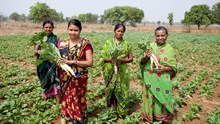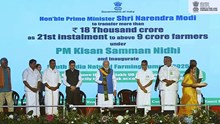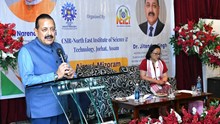
Food and Agriculture Organization of the United Nations (FAO) has raised concerns over the slow pace of progress on key Sustainable Development Goals (SDGs), warning that the world remains far from meeting targets on hunger, nutrition, gender equality, and environmental sustainability. In its latest report, FAO assessed 22 indicators across six SDGs, Zero Hunger, Gender Equality, Clean Water and Sanitation, Responsible Consumption and Production, Life Below Water, and Life on Land.
The findings show that while nearly one-quarter of the targets are close to being achieved, another quarter remains far or very far off track, and the rest show only moderate progress. Data availability on these indicators has improved significantly, reaching 65 percent in 2025 compared to just 32 percent in 2017. FAO Chief Statistician José Rosero Moncayo said the report highlights both the regions making headway and those falling behind, urging governments to intensify efforts to secure food security and advance sustainable agriculture.
Global food insecurity remains a pressing challenge. Nearly 2.3 billion people, 28 percent of the world’s population, were moderately or severely food insecure in 2024, a steep rise from 1.6 billion people, or 21.4 percent, in 2015.
Hunger affected about 8.2 percent of the global population in 2024, reflecting a deterioration compared to 2015 levels. Women continue to face nutritional gaps, with only 65 percent of women of childbearing age meeting minimum dietary diversity, while sub-Saharan Africa and South Asia remain the most affected regions.
The report also warns of instability in global food markets. Despite a slight decline in 2023, food price anomalies remain three times higher than the 2015–2019 average, driven by geopolitical tensions and climate shocks. Small-scale food producers in developing countries earn less than half the income of larger producers, often below USD 1,500 annually. Gender disparities in land ownership persist, with men at least twice as likely as women to own land in most countries.
On environmental sustainability, progress is uneven. Water-use efficiency has improved by 23 percent since 2015, but severe water scarcity persists in regions such as Western Asia and Northern Africa. Efforts to conserve animal genetic resources have grown, yet only a small share of breeds are sufficiently safeguarded against extinction.
Global forest cover has continued to decrease, declining from 31.9 percent in 2000 to 31.2 percent in 2020, primarily due to agricultural expansion, although the rate of loss has slowed. At the same time, despite stronger international measures against illegal fishing, the proportion of sustainable fish stocks has continued to fall. The FAO warns that without urgent and coordinated global action, the world risks failing to meet its 2030 targets related to hunger, sustainability, and equality.
















